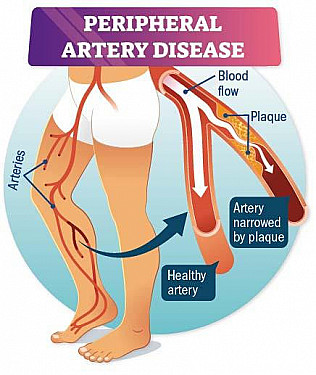What is venous insufficiency?
Ask the doctor

Q. I just found out that my swollen, discolored ankles are symptoms of venous insufficiency. What causes this, and what are the best ways to treat the problem?
A. Venous insufficiency means that your veins aren’t working properly. Veins have valves that allow blood to flow only one direction — back to the heart. Excess weight, lack of exercise, and long periods of standing or sitting can create the need for increased pressure in the leg veins, causing the veins to widen and making the valves less effective. Injuries, surgery, or a clot cause can also damage leg veins. Any of these scenarios can lead to venous insufficiency.
The resulting fluid buildup in the tissues of the legs, called edema, can cause swelling in the lower legs and feet, swollen or painful veins (especially after prolonged standing), or a sense of heaviness in the legs. Some people with this problem describe throbbing, achy, or cramping pain.
The discoloration around your ankles happens because the pooling blood releases substances like hemosiderin, an iron-containing pigment created when the hemoglobin in red blood cells breaks down. The trapped iron shows up under your skin and may appear as a yellow, brown, or black stain that resembles a bruise. Other skin changes can occur, such as red, itchy, or scaly patches on the lower legs, known as venous eczema or statis dermatitis. Sometimes, the damaged layer of the skin breaks down to the point where even a tiny nick or scratch can result in an oozing, open wound, called a venous ulcer.
Recommended treatments for venous insufficiency include elevating your legs when you sit or lie down, which helps prevent gravity from pulling fluid to the lower legs. Avoid long periods of standing or sitting. On long trips, flex and extend your legs and ankles about 10 times every hour or so to encourage blood flow. Regular exercise like walking can be helpful because with every step, your calf muscles squeeze blood back to the heart.
Support or compression stockings that you can buy online or at a drugstore may help reduce swelling and discomfort. But sometimes, prescription-grade stockings (which are tighter) are more effective. Be sure they fit well with no bunching, as that can block blood flow and sometimes make the problem worse.
Wash and moisturize your skin daily to prevent flaking and cracks, which can become infected. Keep an eye out for ulcers, and if one develops, ask your doctor about topical treatments to clean the wound and prevent infection.
Image: © Pikovit44/Getty Images
About the Author

Christopher P. Cannon, MD, Editor in Chief, Harvard Heart Letter; Editorial Advisory Board Member, Harvard Health Publishing
Disclaimer:
As a service to our readers, Harvard Health Publishing provides access to our library of archived content. Please note the date of last review or update on all articles.
No content on this site, regardless of date, should ever be used as a substitute for direct medical advice from your doctor or other qualified clinician.
















